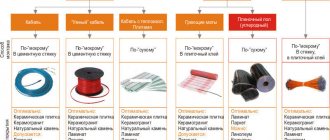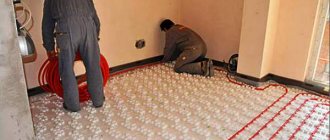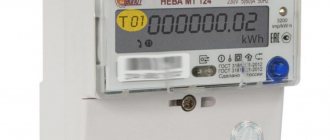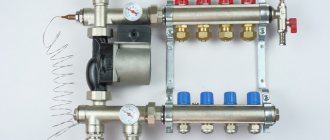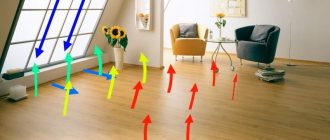According to consumers, analysis made by review experts, the best manufacturers of heated floors are the following companies: Electrolux, Caleo, Devi, Sun Power. An example of the best heating thermomat is Electrolux EMSM 2-150-9. It is not much inferior to the Devi DSVF-150 7×0.5 480. The best electrical system is the Caleo Unimat Rail-0100 model. A worthy choice will be made if you decide to install the film heated floor Sun Power Film SPR 82-130-3 yourself. The advantages of each product are indicated by indicators - simplicity of design, factors ensuring speed of installation, as well as high strength of heating elements.
Warm floors serve as both the main and auxiliary methods of heating rooms. With the help of a heated floor system, heat flows are evenly distributed in living rooms. Before choosing products, the owner needs:
- understand the types of heated floors;
- learn about the advantages and disadvantages of products;
- determine what difficulties will arise during installation.
How to choose the right electric heated floor
Floors to choose from:
Heating cable
A heating element or metal wire through which an electric current is passed heats the finishing materials of the floor surface, and the heat enters the air space of the room.
Economical electric floor heating systems include resistive heating cables with serpentine laying. The developer can choose the most optimal distance between the heating elements, if it is necessary to heat a cold room, use such a floor as the main heat source. But this method is labor-intensive due to laying the concrete screed.
The characteristic features of the product are a high degree of specific heat release and preservation of technical characteristics throughout the entire operation. This type is well suited for the main heating of the room, and not for additional floor heating. The heating of the cable in the screed occurs in 2-3 hours, but even then the screed remains warm for just as long. The cable thickness is about 6 mm.
Heating mats
It is very easy to install the heating mat. In this device, the conductor is attached by a snake with a certain pitch to a polymer mesh. Installation is possible under floor coverings made of ceramics, porcelain stoneware and natural stone. The heating mat is cut into fragments without violating the integrity of the conductor. The installation does not require a screed; it is used for finishing the floor covering and is installed between layers of adhesive.
This type of system is expensive, but it is not suitable for the main heat source. Ideal for heating cold tiles in the bathroom, kitchen, hallway or as additional heating for a cold room. Warms up in about 30 minutes. Cable thickness 3-4 mm.
Infrared heated floors
An example of the infrared heating principle is film and rod heated floors.
Universal infrared floors. The film construction wins in popularity over tubular infrared floors. Heating does not come from air, but from objects that give off their heat into space. It wins due to its low price and heating speed. Of the minuses: not as reliable as cable, service life is only up to 7 years.
Installation is no easier than installing a heating mat. You will have to manually connect the terminals and place the sheets in the correct order. But if there are no more heating options, and the pre-finish coating has already been laid, then this type is quite suitable.
It is often written that film heated floors are the best among competitors. But that's not true. If you look at the facts stated above, you can understand that the use of such heating is carried out as a last resort, when it is no longer possible to do other types.
The main thing to remember is that this type should never be laid under stationary furniture; there is a risk of excessive heating and fire.
What is better: heating cable or film flooring?
Expert N. Filimonova highlighted the main advantages of convection heating over film heating.
The positive aspects of cable systems include:
- reliability of design;
- electrical safety;
- easy installation thanks to factory connections in the product;
- production quality verified by high-voltage tests;
- installation in any room, regardless of humidity and type of flooring.
Disadvantages of film floors:
- connections are made independently, which makes electrical heating vulnerable in these places;
- it is impossible to check the installation for strength;
- installation is not suitable for all types of coating, mainly for laminate, linoleum, carpet.
What type of underfloor heating is best to use under tiles?
Floor tiles are a material characterized not only by durability, practicality and beauty, but also by high thermal conductivity. That is, it heats up easily and cools down quickly, which is why floors covered with it are not always comfortable for walking on them, for example, barefoot. This disadvantage is especially acute in the off-season, when there is no heating in the house yet, but it is already quite cool outside. That is why previously tiles were laid on the floors throughout the apartment less often.
Now the situation has changed. It is now easy to get rid of the main disadvantage of tiled bases - high thermal conductivity - by installing a floor heating system under the finishing material. You just need to install it and then turn it on at the right time - and the tile will acquire a temperature that is comfortable for a person. The most common places for installing such heating systems are the bathroom, toilet, toilet, hallway and kitchen. This is where “cold” tiles are most often placed.
Installation of infrared floor
On a note! In some cases, the underfloor heating system acts as a heating system for the entire room or as an additional part of the heating system of the house. In the first case, the floors need to be installed on approximately 70% of the entire area of the room and with small gaps between the heating circuits.
The configuration of the floor heating system depends on how it works and what type of heating element it is. You can purchase and install floors that run on water, as well as electric ones, which are divided into several types. Let's get to know them.
Water heating systems
Previously, this was the most common option for underfloor heating in private homes. This heating system is a heating circuit laid according to a special system in the floor screed, that is, a polypropylene pipe, which is securely fixed to the base and then filled with cement screed. To heat the floor covering, water is used as a coolant. It is supplied from the central heating system, if it is possible to connect to it, or from the heating boiler in the house.
Water heated floor
Attention! In apartment buildings, water floors cannot be installed, with the exception of apartments that have special outlets from the heating system designed to connect a heated floor. In other cases it is prohibited!
A water floor is economical and is suitable for installing heating systems in a private home. Installation, by the way, is quite troublesome, but not so expensive. But it’s worth thinking about installing a water floor at the construction and renovation stage. The fact is that such a system can only be installed in a screed. And this is dirty and time-consuming work. Only the screed should dry for almost 30 days! But some modern options for water heating can be installed without a screed, using special heat-distributing plates instead.
Electric heating systems
For electric heating systems, as you might guess, the source of heat is electricity, which is directed from the power supply system to heating cables, mats or infrared floors. And here you can note for yourself the main obvious advantage of this option: such floors can and even should be installed in absolutely any premises, including in apartment buildings! No approvals from the management company, no fears for leaks and no plumbing work related to heating pipes - just opt for electrics, and you already have a heated floor in your home without any restrictions. Another advantage of such a heating system is the ability to accurately regulate the temperature, down to 1 degree, which is not possible with the quickly cooling and long-heating coolant water in the water heating modification.
Table. Types of electric floors.
| System type | Description |
| Cable | This option is a long cable of a special type - heating. It is capable of converting ordinary electricity into thermal energy. This is a durable and reliable option that consumes relatively little electricity, but has high heat dissipation. The main disadvantage is the need for installation in a screed or using special materials, as for water floors. Because of this, the thickness of the base can be significantly increased. The cable can be resistive two-core or single-core. There are also special ultra-thin cables on sale that have a high level of electrical resistance. Any of them must have good insulation to avoid electric shock to the residents of the house. The installation diagram of the cable system is very similar to the diagram of the water heating system. The only difference is in the type of coolant. Most often, cable floors are used, like water floors, in private homes. They are great for complex layouts. |
| Heating mat | This option is more common than cable and is often laid under ceramics. It looks like a thin cable attached to a sheet of fiberglass reinforcing mesh. This is a thin version of the heating system that can be installed without worrying about raising the floor level. Unlike a cable system, this type is more reliable, since in the event of a breakdown, you do not need to change the entire cable, but just replace the damaged section. You also don’t have to completely disassemble the floors—the main thing is to identify the defective area. Installation of the system is extremely simple, and with modest electrical knowledge, you can install such floors even without the help of a specialist. But this option costs more than cable. You can use the floors after installation just a few hours later, as soon as the tile adhesive has hardened - no screed is needed. The mats must not be cut, so the heating area of the room will have to be calculated in advance with high accuracy. Also, they should not be placed where heavy furniture will be placed - overheating and breakdown of the system is possible. |
Heating mats under tiles
How to calculate the area of a heated floor
- Measure the heated area, subtract 15 cm from the walls with areas where heavy furniture will stand. When using a heating mat, no more indicators are required; they are assembled in fragments and, if necessary, cut. For example, the result was 20 m2 - the area of the room that needs to be heated.
- The power of the floors is determined depending on what the heated floor is used for:
- with floor heating for a comfortable temperature – 85 W/m2;
- for additional heating of the floor and the entire room - 125 W/m2;
- in rooms where humidity is high, on surfaces under marble, stone, granite - 140 W/m2;
- with full heating – 180 W/m2.
- If we conventionally take 150 W/m2 as the average value of specific power for a specific room, then the heat transfer will be equal to:
20 m2 x 150 W/m2 = 3000 W
Infrared mats with carbon rods
The design of this type of infrared floor consists of two longitudinal cables, between which carbon fiber heat-generating elements are laid. Such mats can be with or without a backing.
The rods and cables of infrared mats have a diameter of no more than 1 cm, so they can be laid in adhesive under the tiles. But due to the large distance between the elements, heating will not always be uniform. Therefore, it is better to install them in a screed.
The width of the rod mats is usually 0.6-0.9 meters, length – up to 30 meters. They can be cut if necessary, and individual parts can be connected by soldering, adapters or connectors.
Cove of infrared rod heated floor.
Which underfloor heating is better, electric or water?
When comparing water and electric floor heating, there are both positive and negative aspects, regardless of the type of system and technical content. Positive qualities of electric floors:
- comfortable prices;
- versatility, ease of installation;
- application in city apartments and country houses.
Water floors in rural houses and large country cottages are beyond competition with other heating methods. The costs of such technology quickly pay for themselves during operation. Provided that no unexpected breakdowns occur. The electrical system does not require additional maintenance. If the calculations and installation are carried out correctly, such a device will serve for at least 30 years.
N. Filimonova also believes that it is better to install water heating in private country houses. City apartments are more suitable for electrical systems; they do not require separate permits and redevelopment of premises.
Sergey Petrov cites positive points as evidence of the advantages of electrical structures:
- modest initial costs;
- easy installation;
- the system does not fail when the central system is turned off;
- there is no need to coordinate installation with the competent authorities;
- if there are certificates from the manufacturer, the device is safe;
- long service life of quality products.
An electric heating system is used not only as a floor heating system, but also for walls, swimming pools and saunas.
For which floor is infrared heated floor suitable and installation rules?
For infrared film heated floors, the best options are to cover them with laminate, parquet, linoleum or carpet. The system will heat the floor surface and warm up the room in 5 minutes. Installation operations are simplest with laminate.
When laying linoleum or carpet, separate the heating parts with plywood or fiberboard to protect the surface from damage. The coating material must be dense and free of lint on the side with the heating elements.
The following parameters are important for infrared film flooring:
- Width of copper bars and heating carbon strips. The elements are thin, but this size affects the heating rate - the wider, the faster. There are no indicators on service life.
- Quality and type of material – transparent or milky. Transparent films have less resistance to temperature changes with a margin of safety. Milk lamination in the infrared system works when heated to 230. According to safety regulations, this temperature regime is prohibitive.
- Thickness of the lamination layer.
When purchasing and installing, you need to pay attention to the strength of the film and the degree of transparency; matte material cannot be thin.
Rod infrared floor
This type of floor also works on the principle of emitting infrared rays, but instead of film, parallel rods are used. The rods are flexible, but they are much stronger than the fragile IR film, making the system more reliable. The rods are laid in screed or tile adhesive. The power of carbon rods reaches 130-160 W/m2. The roll width is 83 cm, the length is up to 20 m, and the pitch between the rods is 9-10 cm.
Rod infrared floor
Advantages:
- economy, efficiency and high heating rate, like IR film;
- simple installation;
- you can place heavy furniture without fear;
- reliability;
- versatility. This warm floor is compatible with all known floor coverings;
- regulation of heat generated. When overheated, the rods simply stop producing IR rays, so there is no need to worry about rearrangements. True, for self-regulation to be realized, it is imperative to immerse the rods in a 3 cm thick screed.
Minuses:
- high price;
- complaints about the durability of carbon rods. Burning often occurs at the junction of the rod and conductor.
The best manufacturers of heated floors
The leading manufacturers of heated floors on the market are the following companies:
- Electrolux has been providing the world with cable-type floor heaters . These are high-quality products with a textile base impregnated with an adhesive composition, where there are no air bubbles on the surface, installation is ensured by good adhesive conditions.
- Caleo plant produces floor heating systems with infrared emitters for the Russian market. The reliable film is assembled using a unique technology, without connections with hot and cold contacts.
- Devi have been on the underfloor heating market for more than 10 years .
- Film products for underfloor heating from the company Sun Power Film . The heat emanating from the floor surface is perceived by the human body as natural.
What should you consider when purchasing heated floors?
To guarantee a good and durable heated electric floor, pay attention to the following nuances:
- The thermostat can control air and floor temperatures. If the heated floor is the main source of heat, it is better to install air regulation in the room. In a children's room or bathroom, the floor temperature is important. There are dual regulators. It makes sense to use them for wooden floors;
- Along with the purchase of the heated floor, it is better to immediately purchase all the components ;
- heated floors must have certification and a guarantee . Also, the system must be accompanied by instructions indicating operating conditions and installation nuances;
- before purchasing, check the condition of the cables/film/rods, assess the integrity and compliance with the declared package;
- give preference to products from trusted manufacturers.
The best film heated floors
1
Caleo PLATINUM 230-0.5-3.5 230 W/m25 m2 805 W
Rating:5.0
- Heating area: 3.5 m²
- Reduced power consumption: 805 W
- Mat/film length: 700 cm
Average price: RUB 13,344
Film-type warm floors are highly technologically advanced and unique, and have self-regulation of power. This allows you to save on resource consumption, not overheat, and even place furniture. Advantages of Caleo PLATINUM products:
- versatility, suitable for laminate, carpet, parquet flooring.
- installation is carried out without screed;
- heating does not dry out the air.
Russian experts consider Caleo film floors to be number one.
2
National comfort PNK 220 W/m2 2 m2 440 W
Rating:4.9
- Heating area: 2 m²
- Reduced power consumption: 481 W
- Mat/film length: 400 cm
Average price: RUB 2,588
National comfort PNK 220 W/m2 – film infrared heated floor under laminate. The manufacturer guarantees 7 years of operation without failures in the system. Laying the product dry without screed under carpet, parquet, linoleum on balconies, corridors, living rooms. The length of the heating film is fixed. The installation wire is insulated. The advantage of “National Comfort” is its ease of installation under decorative coatings of low thermal conductivity. The material base does not take away even a centimeter from the height of the ceilings.
3
Electrolux ETS 220-4 220 W/m2 4 m2 880 W
Rating:4.8
- Heating area: 4 m²
- Reduced power consumption: 962 W
- Mat/film length: 800 cm
Average price: 6,690 rub.
An infrared film self-regulating set of heated floors with dry installation saves resource consumption by up to 49% compared to other brands of films with electromagnetic radiation. Furniture can be placed on laminate, carpet, linoleum and parquet flooring without damaging the system. Which is provided with anti-spark protection, and natural, effective heating does not dry out the air.
4
Caleo GOLD 230-0.5 230 W/m2 3 m2 690 W
Rating:4.7
- Heating area: 3 m²
- Reduced power consumption: 690 W
- Mat/film length: 600 cm
Average price: 9,506
Self-regulating thermal film combined with an anti-spark mesh is capable of reducing power when the floor temperature increases. Thanks to these properties, the floor heats up quickly with low energy consumption. The advantage of Caleo GOLD film heated floor is its versatility. Quick installation without screed is possible under any decorative coating. The system is ideal for heating bedrooms, children's rooms, and living rooms.
5
Sun Power SPF 50-180-10 900 W
Rating:4.6
- Heating area: 5 m²
- Reduced power consumption: 984 W
- Mat/film length: 1000 cm
Average price: RUB 5,073
This is an ultra-thin polymer film with infrared radiation, which allows you to effectively heat living spaces. Heating elements in the form of black graphite strips consume energy sparingly when heating efficiently. The positive properties of the film include resistance to mechanical damage. The universal type of heating is not subject to corrosive destruction and is compatible with any floor coverings.
Film electric heating
Film electric heated floor
The design of the system is based on a special carbon heating film. When connected to the network, the system begins to produce infrared rays with the parallel release of anions. The functions of the emitter in this system are assigned to a special paste on a carbon (carbon) basis. It is applied to the material in parallel or curved stripes. In expensive versions of the system, the paste is usually applied continuously, resulting in higher heating efficiency.
Schematic diagram of connection
Electricity is supplied through copper-silver conductors. The main working elements of the system are sealed with layers of polyester. The power supply is regulated using a thermostat.
Film heated floor ENERPIA FILM
Film systems are widely represented in the assortment of many manufacturers of similar products. When choosing a brand, focus primarily on the reputation of the manufacturing company, user reviews, and personal preferences. If possible, enlist the help of specialists. Knowledgeable people will be able to give a realistic assessment of the tasks assigned to the heating system and help you choose the best option.
Advantages
Film infrared heated floors are easy to install with your own hands
The key advantage of film electric underfloor heating is its versatility in terms of compatibility with finishing materials. On top of such a film you can lay tiles, linoleum, vinyl panels, as well as laminate, carpet, etc.
The second important advantage of film systems is the possibility of arranging mobile heating based on them. For example, the film can be attached to the back of the carpet and removed when there is no need to use heating.
Electricity consumption of film heated floors
Flaws
Firstly, the main disadvantage of such a system is the large number of hidden contacts. In order for the further operation of the heated floor to be effective, reliable and safe, before accepting the system for permanent use, its performance must be thoroughly tested. In addition, the installation of the finishing coating must be carried out in strict accordance with the technology.
Secondly, when arranging the system, there is a need for additional financial expenses for the purchase of connectors. Without these products it is impossible to achieve high-quality contact between the wire and the film.
Thirdly, if ceramic tiles or other similar materials are laid on top of the heated floor, you will have to spend additional money on arranging the screed. At the same time, the consumption of the adhesive composition also increases - its layer cannot be thinner than 1.5 cm.
The best heating mats
1
Teplolux ProfiMat 180-4.0 720 W
Rating:5.0
- Heating area: 4 m²
- Reduced power consumption: 720 W
- Mat/film length: 800 cm
Average price: RUB 11,881
ProfiMat" 180-4.0 720 W - the best heated floor for electric tiles. On the “Teplolux ProfiMat” 180-4.0 720 W, the manufacturer gives a lifetime guarantee, as long as a house with a floor made of carpet, laminate, linoleum or parquet board lasts, so long will the heating mats last. The purpose of this type of system is to provide heat in the main or additional way. Installation is carried out quickly in the area of tile adhesive or cement mortar, if the floor does not require lifting.
2
DEVIcomfort 150T (DTIR-150) 225 W
Rating:4.9
- Heating area: 1.5 m²
- Reduced power consumption: 225 W
- Mat/film length: 300 cm
Average price: RUB 7,622
Second place in the ranking of heated floors for tiles is taken by DEVIcomfort 150T (DTIR-150) 225 W. The manufacturer DEVI provides a 20-year warranty for DEVIcomfort 150T (DTIR-150) 225W twin-core heating mats. These fire-resistant products with self-adhesive mesh, shielded, the insulation of which does not contain lead impurities, are designed to heat indoor floor surfaces. Installation is carried out without raising the floor level, under the tiles in an adhesive composition.
3
Teplolux Tropix INN 160 W/m2, 4.5 m2, 720 W
Rating:4.8
- Heating area: 4.5 m²
- Reduced power consumption: 787 W
- Mat/film length: 900 cm
Hemstedt
Manufacture: Germany.
Manufacturer Features:
The German company Hemstedt is a family business created back in 1974. Now it is a modern enterprise specializing in the production of cable products and refrigeration equipment elements. All production facilities are located in Germany, so the product is of high quality and has a long service life. The company has been repeatedly awarded the prestigious industry award “Best Of” and the diploma “Top-Innovator” for its success in improving energy-saving technologies and effective innovation policy.
Hemstedt specialists have developed a unique HEM-SISTEM technology for coupling-free connection of underfloor heating elements, ensuring complete tightness and ease of installation. Such systems can operate without revision or maintenance for more than 25 years.
Available types of heated floors:
1. Heating cables. The company produces heating cables for underfloor heating and anti-icing systems.
Heating cable with silicone insulation GSISI.
2. Heating mats. The manufacturer offers thin-layer heating mats for installation under tiles or porcelain stoneware, as well as foil heating mats for dry installation under laminate or parquet boards.
ALU-Z PROFESSIONALWARM.
3. Thermostats. The thermostats produced by the company allow you to use energy economically and achieve the best microclimate in heated rooms.
The best heating cable models:
1
DEVI DEVIflex 18T (DTIP-18) 1340 W
Rating:5.0
- Heating area: 9.3 m²
- Reduced power consumption: 1340 W
- Cable length: 74 m
Average price: RUB 16,740
The rating of underfloor heating in the form of a heating cable is opened by DEVI DEVIflex 18T (DTIP-18) 1340 W. A two-core, fire-resistant, self-extinguishing heating cable is installed in concrete. This universal product is designed for heating office and residential premises. An excellent option for the main heating of the house. The main thing is to calculate it correctly.
2
Electrolux ETC 2-17-1500 from the Twin Cable series
Rating:4.9
- Heating area: 12.5 m²
- Reduced power consumption: 1500 W
- Cable length: 88.2 m
Average price: RUB 15,790
Thin, durable two-core heating cables of the Electrolux ETC 2-17-1500 brand from the Twin Cable series are produced with a base, a heavy-duty aramid thread, into which the heating wire is wound. Both cores are heated, which ensures the heating rate of the surfaces. Laying is possible in rooms with complex relief and structural shapes. Installation is carried out in a concrete screed.
3
Caleo Cable 18W-50 900 W
Rating:4.8
- Heating area: 6.9 m²
- Reduced power consumption: 900 W
- Cable length: 50 m
Average price: 6,110 rub.
This is a high-quality heating cable 4 mm thick for heated floors. Installation takes place in the screed of living rooms, kitchens, bathrooms and dining rooms. Installation is recommended for ceramic tiles or natural stone flooring in both standard and cold rooms. The manufacturer provides a 20-year warranty. The product serves without problems for 50 years.
4
SpyHeat Classic SHD-15-600
Rating:4.7
- Heating area: 5 m²
- Reduced power consumption: 600 W
- Cable length: 40 m
Average price: RUB 2,762
SpyHeat products Classic SHD-15-600 are sets of cable heated floors with a laying area of up to 5 m2 with a nominal cable length of 40 m. The kit is designed for primary and additional heating of floor surfaces in bathrooms, toilets, living rooms and balconies. Impeccable functionality is guaranteed for 50 years.
All products are aimed at the end user. So that the buyer can carry out the installation themselves, the kits are supplied with everything necessary, including detailed installation instructions. If you follow the rules, do not block the heated floor with large objects, and use a system with power suitable for the home, the product will function for a long time without creating problems for the owner.
Types of warm electric floors
So, you have decided on the choice of heat source - electricity. But you still have to make a choice between three options for the heating floor structure. The following types of heated electric floors are distinguished:
- Infrared (rod or film);
- Matte;
- Cable.
Electric film warm floors are made on a bimetallic or carbon base. In the first case, the structure has a polyurethane base. And it uses an alloy of aluminum and copper as a heating element. The upper part of the structure is protected by film from moisture. The carbon infrared floor heating system involves connecting heating elements in parallel and sealing them in a lavsan film. Do not place heavy loads on the surface.
The electric infrared rod heated floor is designed so that it can be installed in a concrete screed or under a layer of glue. A composite material containing graphite is used as a heating element. As the temperature rises, it expands, causing resistance to increase and power to decrease. This floor is well protected from moisture: in a bathhouse, the electric floor is usually made of a rod type. It also allows you to put a load on the surface in the form of heavy furniture.
Another type is matte heated electric floor. Mats are a heating element consisting of a thin cable attached to a thin fiberglass mesh with a certain pitch. They are rolled up and greatly simplify installation work. There is no need for a screed for a matte electric floor - it is mounted in an adhesive layer under ceramic tiles or porcelain stoneware. The thickness of the mat is up to 5 mm, so the floor surface rises slightly.
Warm electric cable floors resemble matte floors in their design and installation method. The main difference is that the cable must be laid as a continuous strip. It is unacceptable to cut the heating element of the cable system. Can be mounted under a concrete screed or directly under the floor covering.

